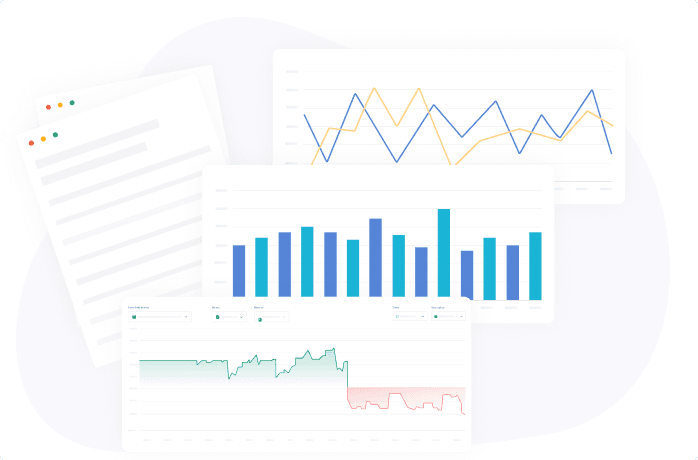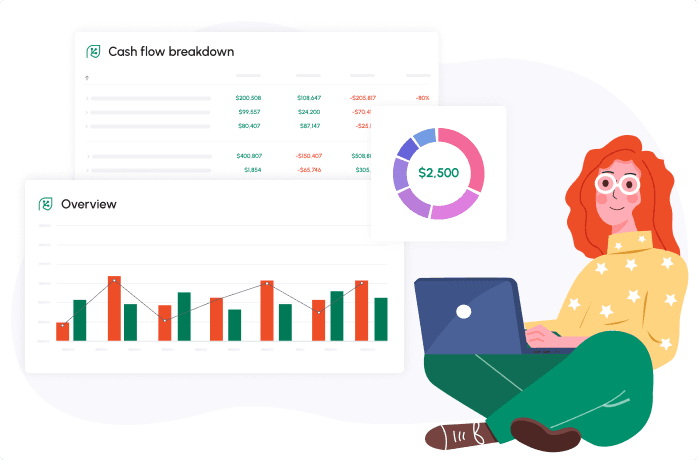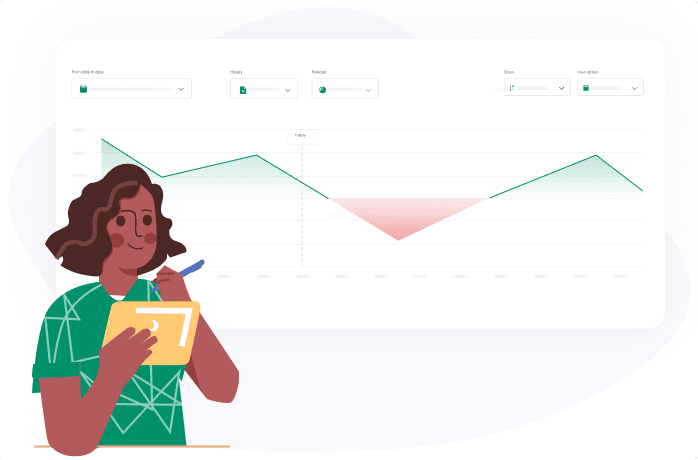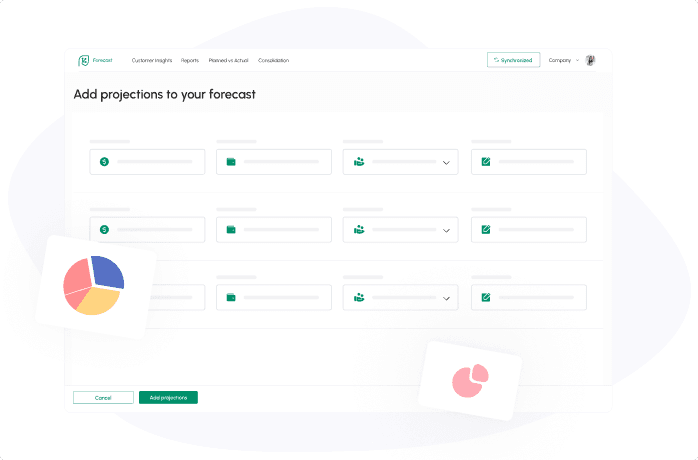

When you take the initiative to gain control over your cash flow, you’ll find that you have to learn direct vs indirect cash flow methods. Both methods are used in businesses worldwide, but there are times when you may want to use one of these methods over another.
In this guide, we’re going to clarify cash flow statement direct vs indirect methods, when to use each option and their respective pros and cons.
Direct Cash Flow Forecasting Method
During your accounting period, and this can be set within Cash Flow Frog using multiple perspectives, the direct method will provide you with a wealth of information:
- List of every transaction
- Cash inflows
- Cash outflows
The main difference between direct method cash flow vs indirect is that when you use the direct method, you’re not modifying operating cash flow using the accrual accounting method.
What does this mean?
Only the cash that has been received will be accounted for, allowing for a better overall view of your cash position.
With this method, the net is calculated by subtracting the cash inflows from the cash outflows for the period.
Pros And Cons Of The Direct Method
Reviewing the pros and cons of the direct method will allow you to have a better understanding of whether this method is the right choice for your business.
Pros
A few of the main reasons to consider this method include:
- Eliminate the confusion of adding non-cash items into the cash flow statement
- Provides greater accuracy for the cash flow during the reporting period that you choose
- Investors will have an easier time viewing the statement and determining whether investing is in their best interest
- Your business is smaller, so it can use the direct method, even if it is more complex
- Direct methods are easier to comprehend in a report, so all business stakeholders can understand them
When you opt to use the direct method, you’re ensuring the utmost transparency and accuracy in your cash flow reports.
Small businesses find that the visibility of a direct cash flow statement provides a greater opportunity to plan in the short term. For example, since all of the transactions have already been realized, there’s no risk of payment not being made.
It's easier to plan in the short term when you know with 100% certainty the amount of cash you have in the bank.
With that said, there are drawbacks to using this method, too.
Cons
The one reason that there’s a debate over direct vs indirect method cash flow is that using the direct method is complex. You need to consider all of your:
- Cash receipts
- Cash disbursements
While the direct method is highly accurate, many businesses can benefit from using this method for their cash flow. The main issue is that there’s a lot of time and resources that go into listing every receipt and disbursement, which becomes more complex as the business grows.
Additionally, the Financial Accounting Standards Board (FASB) will require that you disclose your net income reconciliation from operations activities when using the direct method. The reconciliation will allow for greater transparency and the ability to check the activities for accuracy.
Public businesses may have an issue with all of this information being available. Since a company is public, its competitors can view their financial statements, which can be leveraged to take market share.
Now that we’ve seen the pros and cons of the direct method, it’s important to learn about the indirect method, too.
Indirect Cash Flow Forecasting Method
If you choose to use the indirect method cash flow, it’s important to know that the statement you create is likely to have cash that isn’t in the business’s bank account yet. When comparing the direct vs indirect method of cash flow, this is the one main difference that you must understand. For example, let’s assume that you sell electronics to consumers and allow them to pay using a variety of methods: cash, check or credit. If you receive cash, the money goes directly to the bank.
You can use cash at any moment for your business, such as paying off debt or investing in new business opportunities. However, if you use the indirect method, you will also see the following on your cash flow statement:
- Credit payments, even though they have yet to be received
- Check payments, although they may not have cleared yet
In these cases, there is always a risk that the credit payment will not be made. You may extend credit to a major customer, and they may go bankrupt or fail to pay their invoice. In this case, your indirect cash flow statement may include the payment today, and then tomorrow, the company goes out of business.
In this example, you may have accounted for cash flow that will never be realized.
Using the indirect method, you’ll use variables to adjust cash flow, such as:
- Adjust for non-operating expenses
- Add in accounts payable
- Account for depreciation
- Account for pre-tax earnings and interest
- More
When compared to the direct method, the indirect method is less accurate.
Benefits Of the Indirect Method
Businesses select the indirect method if they use the accrual accounting method because this method of accounting records the following when the transaction is made:
- Revenue
- Expenses
In some cases, the cash is received or spent directly, but in other cases, the cash is yet to be realized. However, if the accrual accounting method is used, it aligns better with the indirect method and offers many benefits, such as:
- Easier time making the statement, as you only need the balance sheet and income statement
- Saves time by not requiring all receipts and disbursements to be listed
A common reason for using the indirect method is that it can help with long-term planning.
Since the direct method works very well, it is great for short-term planning. For long-term planning, accounting for payments that will be made in the future can be beneficial, which is one of the strengths of the indirect method of cash flow.
There will need to be some adjustments to better account for non-payments and improve long-term planning.
Large businesses, especially if they’re public entities, will often use the indirect method, although there are significant drawbacks. Small- to medium-sized companies may be at greater risk when using these reports for decision-making due to these disadvantages.
Disadvantages of the Indirect Method Cash Flow
Large businesses can have thousands of daily transactions, making it extremely time-consuming to use the direct method of cash flows. The choice to use the indirect method comes with the following drawbacks:
- Lack of transparency when compared to the direct method.
- Difficult to meet the strict regulations and requirements in highly regulated industries.
- Cash may not be realized. For example, if a credit payment is counted as cash and there’s a chargeback on the transaction, the payment will not be realized.
- Decisions based on indirect cash flow statements may have higher risks in certain industries where chargebacks are more common.
If you need to secure capital from investors, the indirect method may cause concerns. The direct method provides greater clarity of operations and cash flow, even if it’s a more time-consuming way to run cash flow report.
A statement of cash flows direct vs indirect can be very complicated for non-accounting professionals to fully understand. If you’re wondering, “is a direct vs indirect cash flow statement the right choice for me,” it depends.
Which Method Is Better?
Direct vs indirect cash flow is an internal debate that you’ll need to have with your accountant. Both methods provide great insight into what’s happening with your business’s cash flow so that you can make key decisions to maintain healthy cash flow.
Small - and medium-sized businesses often choose the direct method for cash flow[RE1] because it allows them to better to understand their spending habits and operating cash flow accounts.
Additionally, large businesses may use the indirect method because they have a large number of transactions each day. The complexity of using the cash flow direct method wouldn’t be viable for these large businesses.
Note: The FASB has leaned towards preferring the direct method over the indirect.
At Cash Flow Frog, we use the cash flow direct method.
Why?
We want you to have the in-depth insights that your business needs to manage its cash flow better and find success.
If you want to make creating a cash flow forecast, running projections and forecasting easier, we invite you to give Cash Flow Frog a try.
Related posts:
You may be interested:
New:












